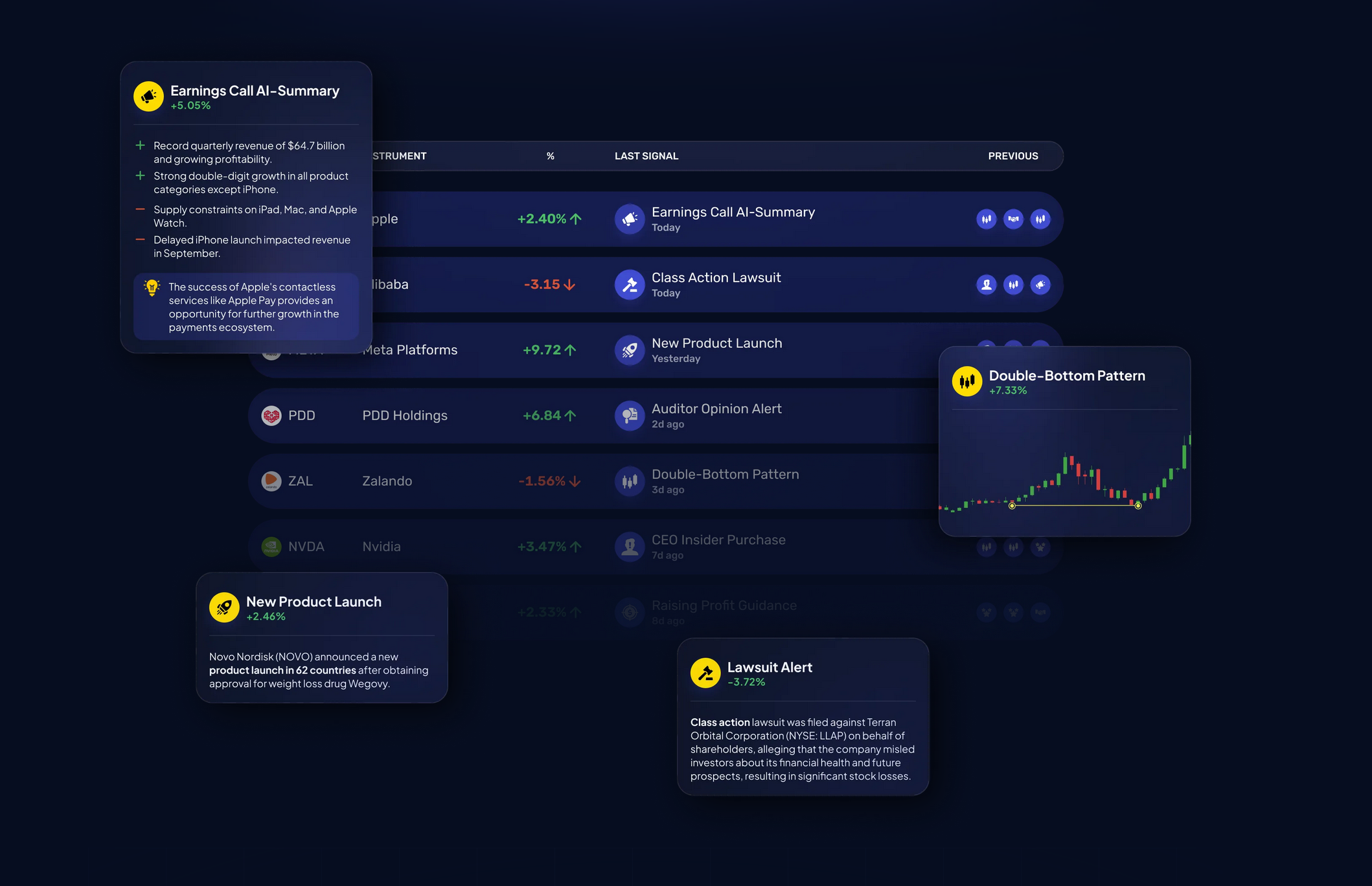20 Pro Pieces Of Advice For Picking AI Stock Trading Sites
20 Pro Pieces Of Advice For Picking AI Stock Trading Sites
Blog Article
Top 10 Tips For Assessing The Market Coverage Of Ai Trading Platforms For Predicting Stocks
When you are evaluating AI trading platforms that forecast or analyze the market, coverage of the stock is a crucial aspect to consider. It determines which assets and markets are readily available. Platforms with a broad market coverage allow you to diversify your options and discover global opportunities and also adapt to different trading strategies. Here are the top ten ways to evaluate the market coverage of these platforms.
1. Evaluate Supported Asset Classes
Stocks - Make sure the platform can provide coverage of the major markets for stocks (e.g. NYSE NASDAQ LSE HKEX) as well as includes mid-caps, small-caps and large-caps.
ETFs: Make sure the platform supports a wide selection of ETFs to provide a diverse exposure to regions, sectors or themes.
Options and futures. Verify that the platform has derivatives such as options, futures and other leveraged instruments.
The commodities and forex. Check to see if there are forex pairs available, as well as precious metals, energy-related commodities, and agricultural commodities.
Cryptocurrencies. Check if it supports all major cryptocurrencies and altcoins (e.g. Bitcoin, Ethereum).
2. Check the coverage area
Global markets - Ensure that the platform can to provide coverage of all major markets around the world which includes North America (including Canada), Europe, Asia-Pacific markets, and emerging ones.
Regional focus Make sure that the platform specializes on certain regions or markets which are in line with your interest in trading.
Local exchanges - Examine to find out if there are local or regional exchanges that relate to your location and strategy.
3. Delayed Data Vs. Delayed Data
Real-time Data: Be sure that your platform is equipped with real-time data for trading and for making timely decisions.
Delayed data: Check if delayed data is available for free or at a cheaper cost. This could be enough for investors who are looking to invest long-term.
Latency of data. Verify whether the platform reduces the time it takes to process real-time feeds particularly when it comes to high-frequency trading.
4. Review the Historical Data available
Historical depth: Make sure whether the platform has extensive historical information (e.g. over 10 years worth of data) for backtesting and analysis.
Look for levels of granularity. Historical data may include daily, intraday and weekly granularity.
Corporate actions: Examine to determine if the data has been accounted for prior to. Dividends as well as stock splits and all other corporate actions should be included.
5. Verify the market depth and order book information
Platforms should offer Level 2 data (order-book depth) to enhance price search and execution.
Verify that your platform displays real-time price spreads.
Volume data: Ensure that the platform provides detailed volume data in order to analyze market liquidity.
6. Review the coverage for Indices and Sectors
Major indices : Make sure you are using a platform that incorporates the most important indices. (e.g. S&P 500, NASDAQ 100, FTSE 100 ) This is crucial for benchmarking and index-based strategies.
Data for specific industries If you're looking to do a more targeted analysis, look into whether there are data available for specific industries.
Custom-designed indices. Verify that the platform is capable of creating and keeping track of custom indices that meet your requirements.
7. Evaluation of the integration with News and Sentiment data
News feeds - Ensure that your platform has live market-driven news feeds (e.g. Bloomberg, Reuters).
Sentiment analysis: Determine if there are tools for sentiment analysis that are based on social media posts, news articles, or other data sources.
Event-driven Strategies: Check if the platform supports strategies that are triggered by events (e.g. economic reports or earnings announcements).
8. Make sure you are aware of Multi-Market Trading Capabilities
Cross-market trading: Make sure the platform allows trading across a variety of assets and markets from one interface.
Confirm that the platform supports multicurrency accounts as well as the conversion of currencies for trading internationally.
Support for various time zones It is important to ensure that the platform supports trading globally on markets across different time zones.
9. Examine coverage of alternative data sources
Alternative data: For more unique insights, confirm that your platform utilizes alternative data (e.g. satellite imagery, web traffic or credit card transactions).
ESG data: Determine whether the platform contains environmental as well as social and governance (ESG) information for socially responsible investing.
Macroeconomic Data: Ensure that the platform has macroeconomic indicators, such as inflation, GDP and interest rates.
Review reviews and feedback from customers as well as the reputation of the market
User reviews: Study user feedback to gauge the coverage of the platform's market and the reliability.
Find out the reputation of the platform in relation to its coverage or industry awards.
Case studies and testimonials These will demonstrate the platform's performance in certain asset classes or markets.
Bonus Tips
Trial time: You can try a demo, trial or free trial to evaluate the coverage of markets as well as the quality of data.
API access - Determine if the API is able to gain access to data from the market programmatically.
Customer Support: Ensure that the platform is able to offer support for any data-related or market-related issues.
Follow these tips to evaluate the market coverage provided by AI stock trading platforms. Choose a platform with access to the markets, information and tools you need for successful trading. Market coverage is essential to diversify portfolios, find new opportunities and adapt to market conditions. Check out the most popular ai for investment for blog tips including ai for stock trading, AI stock market, AI stock trading bot free, trading ai, best ai for trading, AI stock trading, ai for investment, best ai trading software, options ai, options ai and more.
Top 10 Tips For Evaluating The Social And Community Features Of Ai Stock Predicting/Analyzing Trading Platforms
It is essential to comprehend how users communicate, exchange insights and learn from each other by analyzing the social and community capabilities of AI-driven prediction platforms and trading platforms. These features can improve the user's experience and provide useful help. These are 10 top ways to analyze the social and community elements of these platforms:
1. Active User Community
Tips: Make sure the platform is active with a user base that is regularly engaged in discussion, shares information and offers feedback.
Why? A community that is active creates an environment which allows its members to learn and grow by sharing their experiences.
2. Discussion Forums, Boards
TIP: Evaluate the quality and amount of activity on message boards or forums.
Why? Forums allow users to ask questions, talk about strategies and market trends.
3. Social Media Integration
TIP: Check if the platform permits users to share information and updates through social media channels, such as Twitter or LinkedIn.
What's the reason? Social integration of media is an excellent way to increase engagement, and get real-time updates on the market.
4. User-generated content
Find tools that let you share and create content such as blogs, articles or trading strategies.
The reason: User-generated content promotes the spirit of collaboration and gives diverse perspectives.
5. Expert Contributions
Tips: Make sure the platform features contributions from industry experts for example, market analysts, or AI specialists.
The reason: Expert insights add credibility and depth to discussions within communities.
6. Real-time Chat and Messaging
Tip : Assess the accessibility of instant messaging and real-time chat options to allow users to chat in real-time.
Why is this? Real-time interaction facilitates quick information exchange and collaboration work.
7. Community Modulation and Support
TIP: Assess the support and level of moderation in your community.
How do you know? A well-balanced moderation strategy can help create a peaceful and positive atmosphere. Help is readily available to resolve issues quickly.
8. Webinars and events
TIP: Find out whether your platform offers live sessions, Q&As or webinars.
The reason: These events offer opportunities for learning and direct contact with industry experts.
9. User Reviews and Commentaries
Tips - Search for features where users can leave feedback about the platform as well as its community and features.
Why: User input helps identify strengths as well as areas for improvement.
10. Gamification of Rewards
Tips - Make sure to check whether your platform offers the ability to gamify (e.g. leaderboards, badges) or rewards that are given in exchange for participation.
Gamification can be a powerful method to increase engagement of users with the community.
Bonus Tips on Privacy and Security
Make sure that security and privacy features for community and social functions are strong enough to guard the privacy of data and user interactions.
These aspects will help you determine whether a platform for trading or AI stock prediction offers a friendly and supportive community that can help you improve your trading knowledge and experience. Have a look at the top best ai penny stocks for site advice including AI stock trader, free AI stock picker, stocks ai, investing with ai, trading ai tool, AI stock trader, can ai predict stock market, best AI stocks to buy now, stocks ai, AI stock analysis and more.